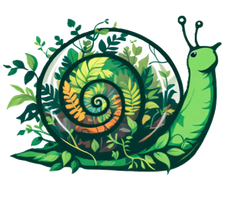Open mobile app


Leaf us a messageWe’re here to help your plants thrive.
Hello! Need help? Reach out, we don’t bite (unless you’re Aphids)
**Nematodes**
If the worms are uniformly white from top to tail, they are most likely nematodes, which are predominantly beneficial. These little white worms can appear unannounced, presumably from eggs in the substrate.
Nematodes are non-parasitic and play a vital role in soil health. They come in various types, including herbivores, bacterivores, fungivores, omnivores, and even predators. They range from just a few centimeters long to microscopic species.
The bacterivore and fungivore species can be beneficial in keeping fungal and mold growth in check. However, herbivorous nematodes can feed on plants and their roots. Some parasitic nematodes will target terrarium pests in the shallow part of the substrate, such as fungus gnats and aphids, but they could potentially threaten other animals in the terrarium.
**Fungus Gnat Larvae**
If the worms have a tiny brown or black head, they could be fungus gnat larvae. Fungus gnats eat fungus, so if you have them in your terrarium, it may indicate that your enclosure is wet enough to promote fungal growth.
**Detritus Worms**
Detritus worms are red or brown annelids that are harmless to fish and can be identified by their movement.
They are a type of Naididae, microscopically round but different from roundworms.
One way to tell detritus worms apart from nematodes is that detritus worms flatten their bodies against the glass when crawling, whereas roundworms remain rounded.


Hello! Need help? Reach out, we don’t bite (unless you’re Aphids)
